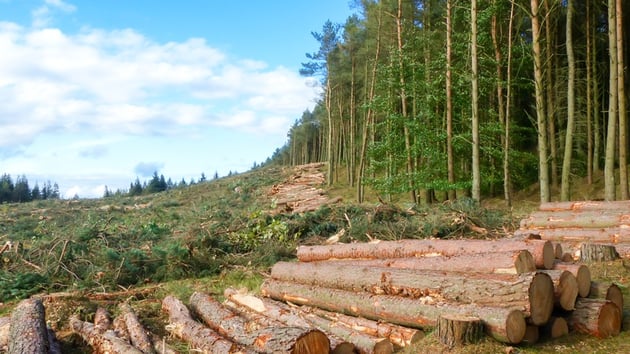Removing and Storing Carbon with Forest Products
The Forest Products Association of Canada (FPAC) recently made news with its ambitious plans to reduce Canada’s carbon emissions by 30 megatons (MT) by the year 2030 in its “30 by 30 Climate Change Challenge” campaign. Experts may quibble with the association’s ability to account for these numbers because, unlike other manufactured goods, forest products are capable of removing and storing carbon from the atmosphere. Regardless of any controversy in this respect, we honor the efforts of any industry player that is taking steps to increase the sustainability of its resources and reduce its impact on global climate change.

Wood, as long as it isn’t burning or decaying, is hard at work storing carbon and keeping it out of the atmosphere - this is one of the many ways forests and even wood products can help fight climate change. It’s true, even though it’s not living wood in the ground, your wooden bookshelf, your house, and even your magazines are helping to keep harmful carbon from collecting in the atmosphere. Wood products have even more impact when they are used in place of fossil-fuel-intensive products like concrete or steel which demand more resources to produce and which don’t provide the post-manufacturing benefits of carbon storage.
To further increase the benefits of wood manufacturing, even what used to be seen as scrap is now being used in wood products such as wood pellets, pulpwood, limbs, and chips. Cross-laminated timber (CLT) panels can now be created using wood that was affected by a disease and formerly considered waste.
Advances have also been made in the biomaterial field, using forest resources as an alternative ingredient to conventional materials for a host of new products. Biomaterials are now included as ingredients in everything from sweeteners to plastics to hair dye. They are also being used in the development of new fuels and gels for the medical industry. As the biomaterial field continues to progress, wood will remain a major contributor.
As great as the strides that we have taken in forest product development are, the sustainable management of the forests remains a key factor in the industry’s plan to reduce carbon emissions. One could certainly argue that a sustainably managed forest is more productive at carbon storage than a forest that is left alone. Management can promote forest growth and health with selective harvesting and create gaps in the canopy allowing more sunlight to penetrate the forest, and encouraging more tree growth. Sustainable management can also help minimize the danger of fire by removing potential fuel (wildfires are responsible for 3% of the annual greenhouse gas emissions in the U.S.)

We aim to help foresters and loggers do their part in the sustainable management of their forests. We purpose build our Primex line of forestry tires to stand up to long hours working in challenging terrain. Using specialized treads to increase traction and reduce slippage, Primex tires can help lower equipment's fuel consumption further helping reduce our impact on the environment. Primex Floatation forestry tires can also minimize the damage done to delicate soils, allowing easier regrowth of the forest, and further enhancing the renewability of this precious resource.
We encourage you to do your part by sharing this post to help spread awareness about the importance of protecting our forests and the good the FPAC is doing to fight climate change.

